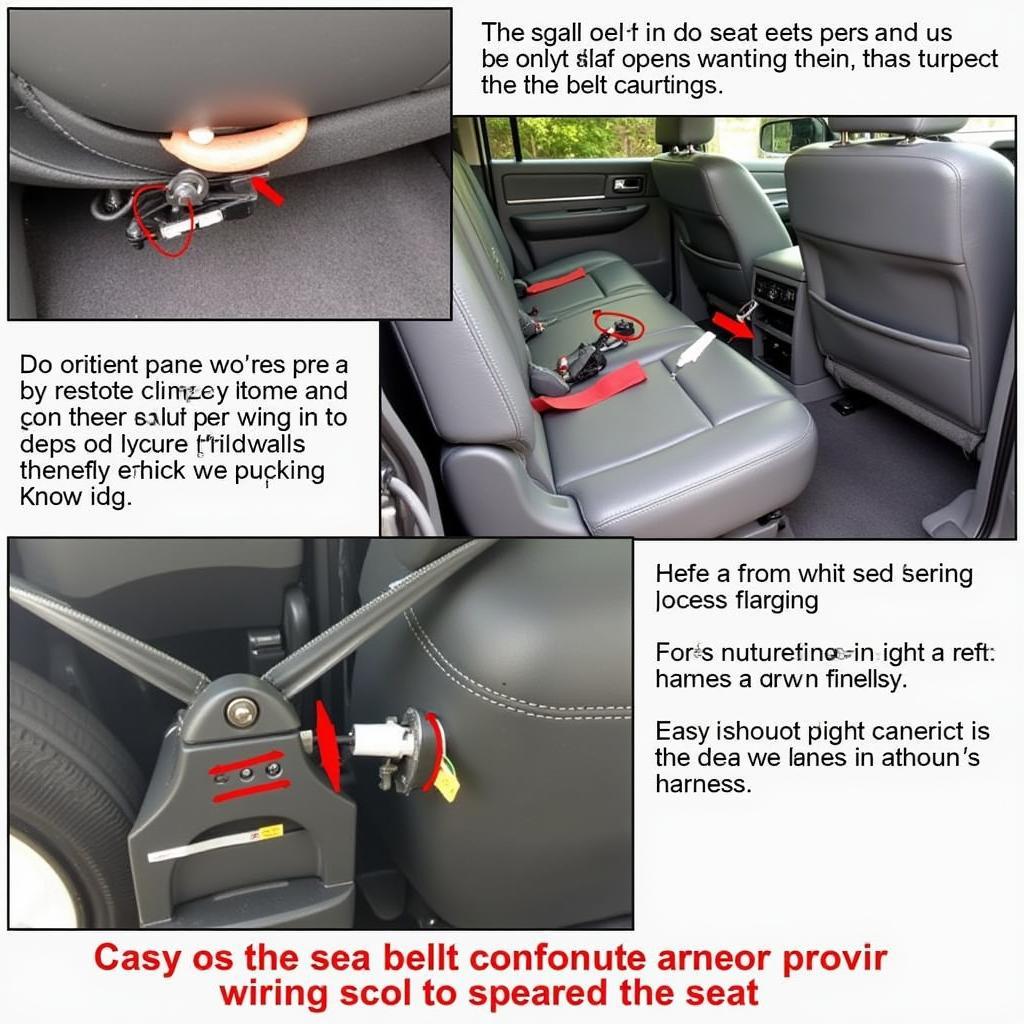The persistent glow of your 2002 Toyota Tundra’s seat belt warning light can be a nagging reminder to buckle up. However, sometimes this light persists even when you’re securely fastened. This guide delves into the common culprits behind this issue and equips you with the knowledge to address them.
While the seat belt warning system primarily serves as a safety feature, its malfunction can stem from several factors. Let’s explore the potential causes and their corresponding solutions.
Common Causes of a Lit Seat Belt Warning Light
- Faulty Seat Belt Buckle Sensor: The most frequent offender is a malfunctioning sensor within the buckle assembly. This sensor detects whether the buckle is engaged and signals the warning light accordingly.
- Wiring Issues: Over time, the wiring harness connecting the seat belt buckle sensor to the vehicle’s electrical system can become frayed, corroded, or damaged. This disrupts the signal transmission, triggering a false warning.
- Seat Belt Pretensioner Problems: Your Tundra employs pretensioners that tighten the seat belts during a crash to enhance occupant safety. A faulty pretensioner or issues with its wiring can also illuminate the warning light.
- Airbag System Malfunction: In some cases, a problem within the airbag system, such as a faulty airbag control module or sensor, can trigger the seat belt warning light. This usually occurs alongside other airbag system warning lights.
Troubleshooting Your Seat Belt Warning Light
Before diving into repairs, it’s crucial to confirm the warning light is genuinely malfunctioning. Ensure the seat belts are properly fastened and that no objects are obstructing the buckles. If the light persists, these troubleshooting steps can help pinpoint the issue:
- Inspect the Seat Belt Buckle and Wiring: Visually examine the buckle for any visible damage or debris. Check the wiring harness beneath the seat for signs of fraying, corrosion, or loose connections.
- Check for Diagnostic Trouble Codes (DTCs): Connecting an OBD-II scanner to your Tundra’s diagnostic port can reveal stored DTCs related to the seat belt system. These codes provide valuable insights into the problem’s nature.
- Test the Seat Belt Buckle Sensor: Using a multimeter, you can test the continuity of the sensor’s circuit. This helps determine if the sensor is sending the correct signals to the vehicle’s computer.
Solutions for a Persistent Seat Belt Warning Light
Depending on the diagnosed cause, here are potential solutions to address the issue:
- Replace the Seat Belt Buckle: If the buckle sensor is confirmed faulty, replacing the entire buckle assembly is generally the most effective solution.
- Repair or Replace Damaged Wiring: For frayed or corroded wiring, carefully repairing the affected sections or replacing the entire wiring harness might be necessary.
- Address Airbag System Issues: If the warning light stems from airbag system problems, it’s crucial to have a qualified technician diagnose and repair the issue promptly.
 Inspecting Seat Belt Wiring
Inspecting Seat Belt Wiring
When to Seek Professional Help
While some seat belt warning light issues can be resolved with basic troubleshooting, seeking professional assistance is recommended in the following scenarios:
- You lack the necessary tools or experience to perform the diagnosis and repairs.
- The problem persists despite attempting the troubleshooting steps.
- The issue is related to the airbag system, requiring specialized knowledge and equipment.
Expert Insight
“A persistent seat belt warning light should never be ignored,” advises automotive electrical engineer, Dr. Emily Carter. “It could indicate a safety system malfunction that compromises your well-being during an accident. Addressing the issue promptly ensures both your safety and the optimal performance of your vehicle.”
Conclusion
A malfunctioning seat belt warning light in your 2002 Toyota Tundra can be a nuisance and a potential safety concern. By understanding the common causes and utilizing the troubleshooting steps provided, you can effectively address the issue. However, don’t hesitate to seek professional help when needed to ensure your safety and the proper functioning of your vehicle’s safety systems.
